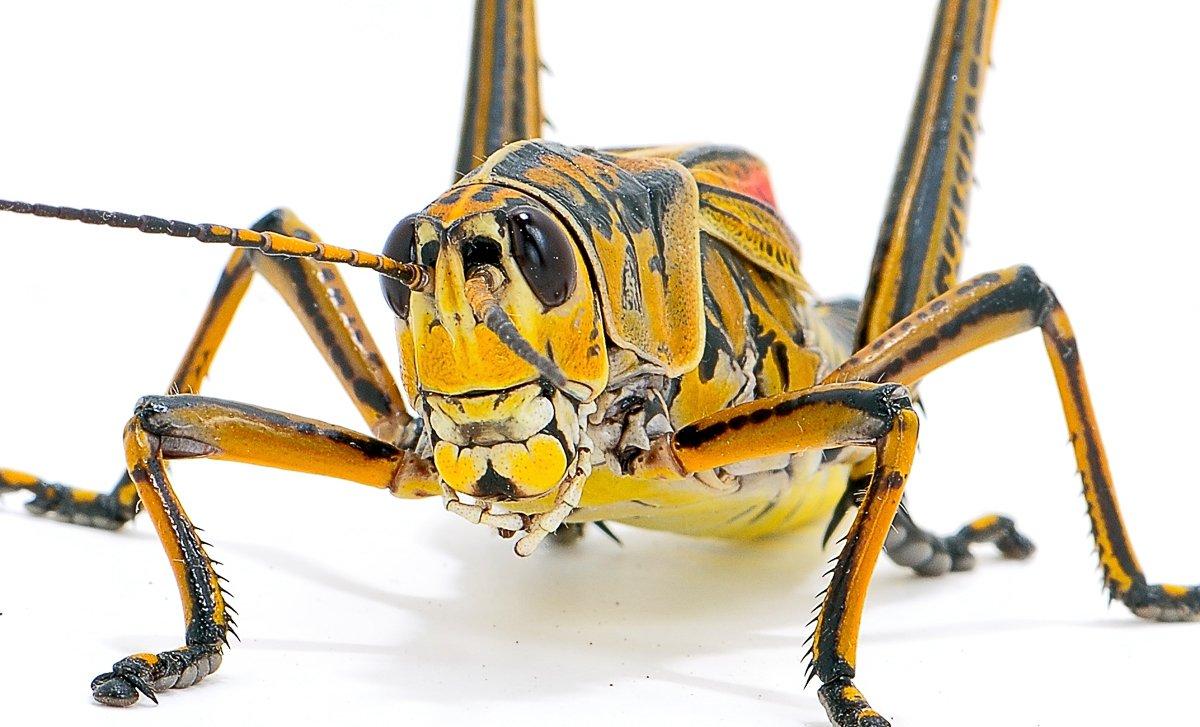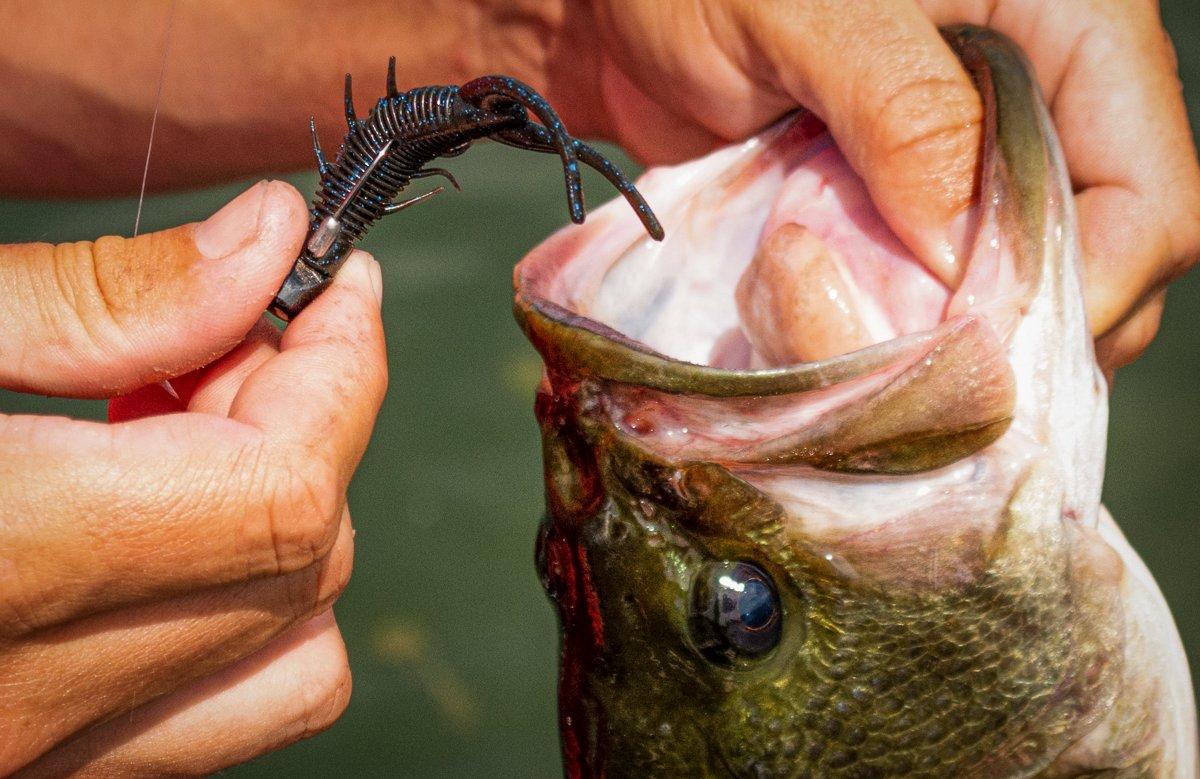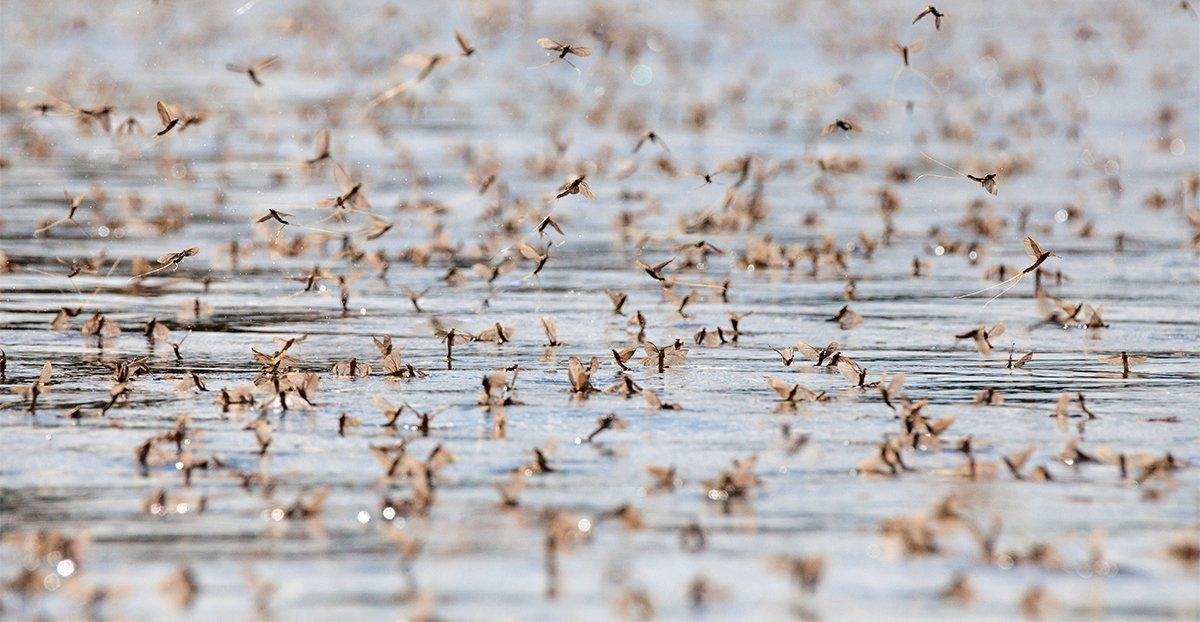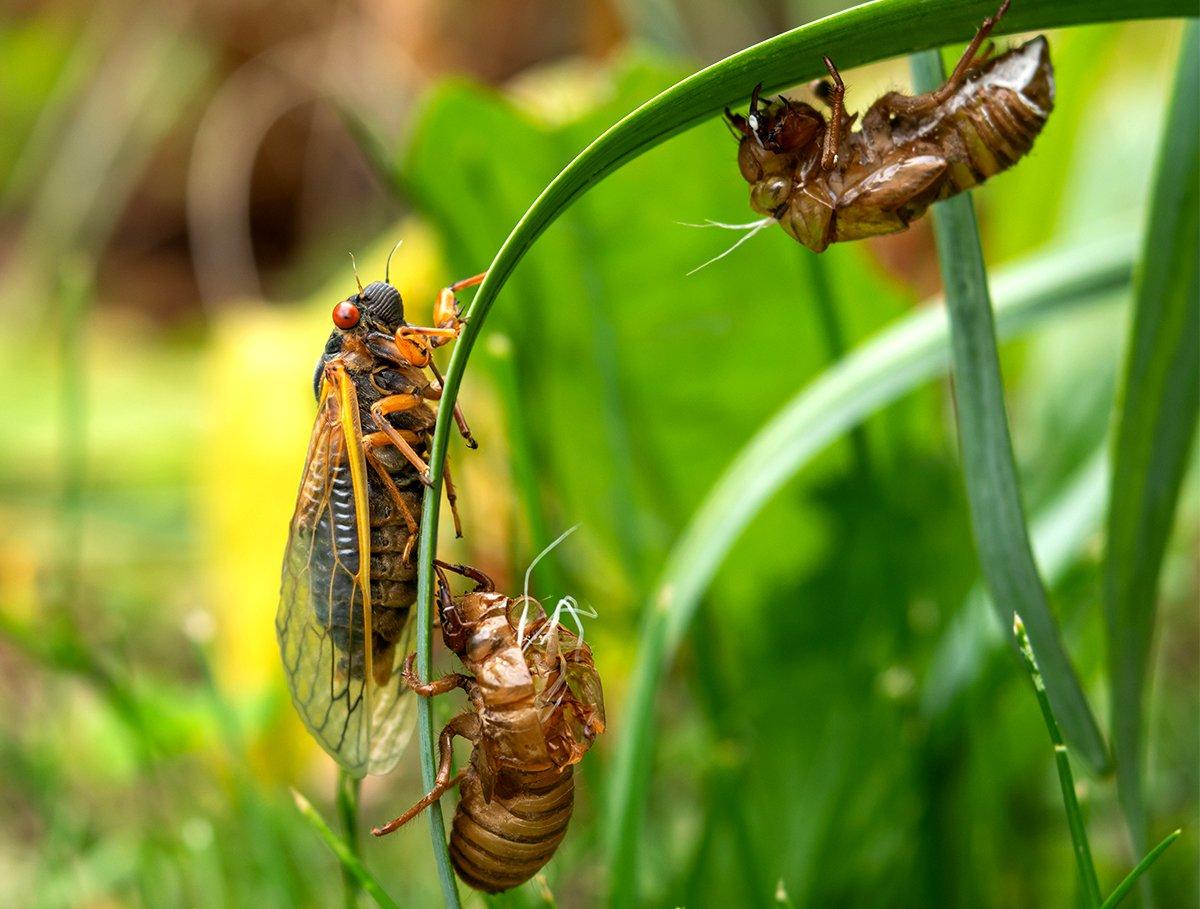Mayfly hatches and Brood X cicadas can provide outstanding opportunity for bass, walleyes, panfish, and more, but only if you use the right presentations
Why would a fish eat a bug? I found myself asking that question the first time a buddy showed me a Mayfly Rig.
After an unsuccessful day chasing walleyes on Lake Erie, and watching hundreds on the screen of my depth finder, I had nothing to show for my efforts. My friend, on the other hand, limited out early.
Apparently, his secret was lure choice. We'd fished the same area on the same day; even used the same bait from the same bin. But I got skunked, and he was napping at noon.
His rig was somewhat new at the time, and more a modification than a revolutionary lure. A mayfly rig, as they're called, is nothing more than a scaled-down crawler harness. The principle is the same — beads and blades — but the entire package is miniscule. And it's deadly on Lake Erie walleyes at one magic time each year.
Often, the fish are so gorged on mayflies that they, too, smell like the bugs.
A full-on mayfly hatch is a sight to behold. Every June around the Western Basin of Lake Erie, millions — maybe zillions — of mayflies hatch over a three-week period. Bug numbers get so plentiful that local municipalities use street sweepers and snowplows to clear the road, otherwise risking automobile collisions as cars slide on the carcasses. The entire lakeside area from Ohio to Ontario takes on an unmistakable odor.
(Killer Buy Alert: Men's Bass Realtree Fishing Short Sleeve White Shirt)
But back to the fishing. During this time, the Erie walleyes go berserk, feasting on the insects. Mayflies, you see, are born on the bottom of the lake and rise to the surface, where they dry off, fly off, reproduce, and die. All in a couple days.
Many never make it to the fly-off stage because they end up in the bellies of one of Erie's 150-million walleyes first. Often, the fish are so gorged on mayflies that they, too, smell like the bugs.
So why would a fish eat a bug? Because it's free.
Now our leading example may sound like an exception, something that takes place in a localized area. But don't be too sure. Over the years, I've seen major insect hatches completely change a fishery, if only for a short time. This season, with a 17-year cicada hatch through much of the country's midsection, we can expect the same. So how can we avoid a blunder and take advantage if this unique condition?
Brood X
For starters, let's dive into the cicada topic. We all know of the 17-year hatches; I can vividly remember the creepy cicada shells covering the trees in my yard as a kid. This year, an especially big brood — dubbed Brood X — is scheduled to appear throughout Indiana, Pennsylvania, and parts of Tennessee and Virginia.
Cicadas will cover the trees and make their way into local waters. Fish will respond to the feast.
It's important to recognize places where this is most likely to occur. The cicada starts life as a nymph, feeding on the roots of a tree during the long incubation period. Once they emerge, the nymphs climb the tree, essentially turn to adults, sing, reproduce, and lay their eggs. After the eggs hatch, the new nymphs drop to the ground, burrow, and repeat the process.
(Don't Miss: 5 Top Lures for Summertime Bass Fishing)
Not any type of tree will do. Cicadas seem to prefer fruit trees and large deciduous varieties, like maples, oaks, and chestnuts. They stay away from pines.
The highest numbers of bugs are often found on the edges of wooded areas, and in areas of dense, young underbrush. Dialing it in even more, given the opportunity, cicadas like western-facing areas where they can receive the most sun.
Pretty specific, huh? Knowing these factors, we can now make an educated guess where the highest insect numbers will be, and where this intersects with our favorite fishing holes.
Looking for bug-busting bass? A handful of big trees with heavy canopies protruding over the water would be a good starting point. Hitting the streams? Find where the outside bends come up into the woods, and be on the lookout for rising fish.
Match the Hatch
This old adage originated in the trout world, where fishing an exact replica of the preferred food is necessary to fool picky fish. And while we don't always have to be perfect, it's important that lures are right.
Again turning to our walleye example, I can't overstress how effective the mayfly rig can be. While the mini harness looks nothing like the bug, it takes into consideration the mood of the fish during this period. Already stuffed to the brim, the fish stop hunting.
The key is to downsize our presentations during a hatch. Lighten up on your line, and select small, subtle lures.
(Killer Buy Alert: Realtree Wav3 Dark Blue Fishing Performance Shirt)
Mayflies and grasshoppers can be a favorite of shallow-water bass. There, a buggy-looking plastic, fished lightly and well off the bottom, can be killer. For panfish, try a beetle spin — hence the name — and go with the little 1/32-ounce version. It's just enough flash, and the perfect size. Another sleeper for nearly every fish that feeds on insects is an inline spinner. Despite being small in profile, these little metal lures cast well and can be buzzed like a bee just under the surface.
When it comes to big cicadas like Brood X, it's hard to beat a topwater popper. These come in a variety of sizes. By matching tackle properly — light spinning gear for small lures, heavier lines and rods for larger ones — a popper is effective for bluegills as much as bass and toothy predators.
Dare you say a pike or muskie won't be fooled by a bug imitator? During the bug hatch, everything is looking up. Whether the biggest fish think my bait is an insect, or panfish feeding on one, doesn't really matter once the rod bends.
Go Natural
One final way to ensure you're fishing right is to use the bugs themselves. We all tried grasshoppers as kids, and many veteran anglers still find crickets are the best bait for spring bream. But cicadas?
Sure. If you can get over the feel of giant bugs crawling around in your hands, a cicada makes a very effective bait. Two things to remember: One, always use a long, light-wire hook for this type of fishing. The key when fishing any bug bait is to hook the insect near the midsection, and only have enough weight to slowly sink the bait. Second, don't expect to cast very far. Cane pole-style fishing is the way to go for panfish, or rig a slip-bobber when you move off the bank. Either way, increase your line size if you plan to tangle with bass.
Fish are opportunists; we hear this all the time. This summer, expect that opportunity to be buzzing around the trees.
(Don't Miss: Best Lures for Crappie Fishing: Jigs vs. Minnows)












